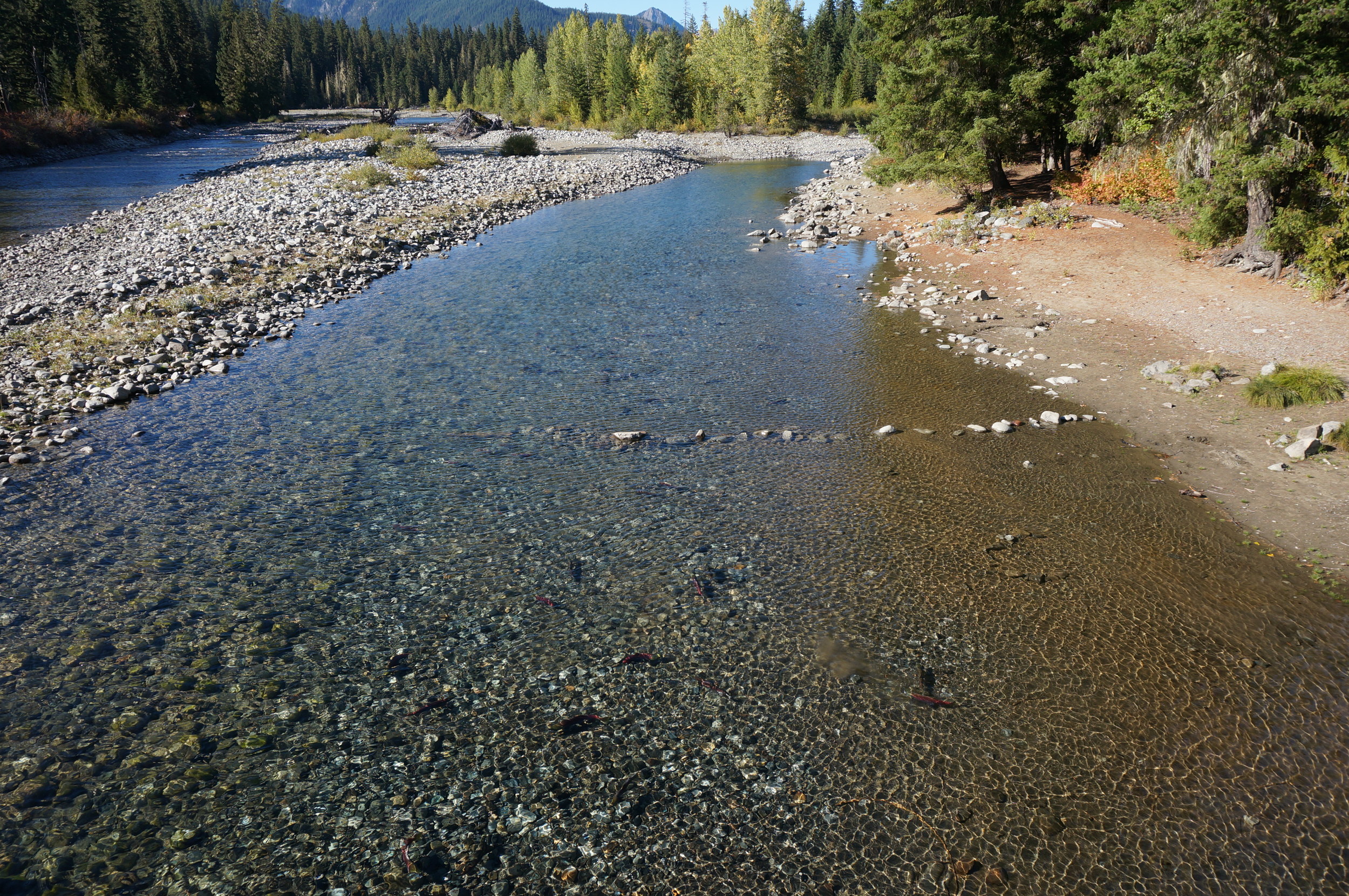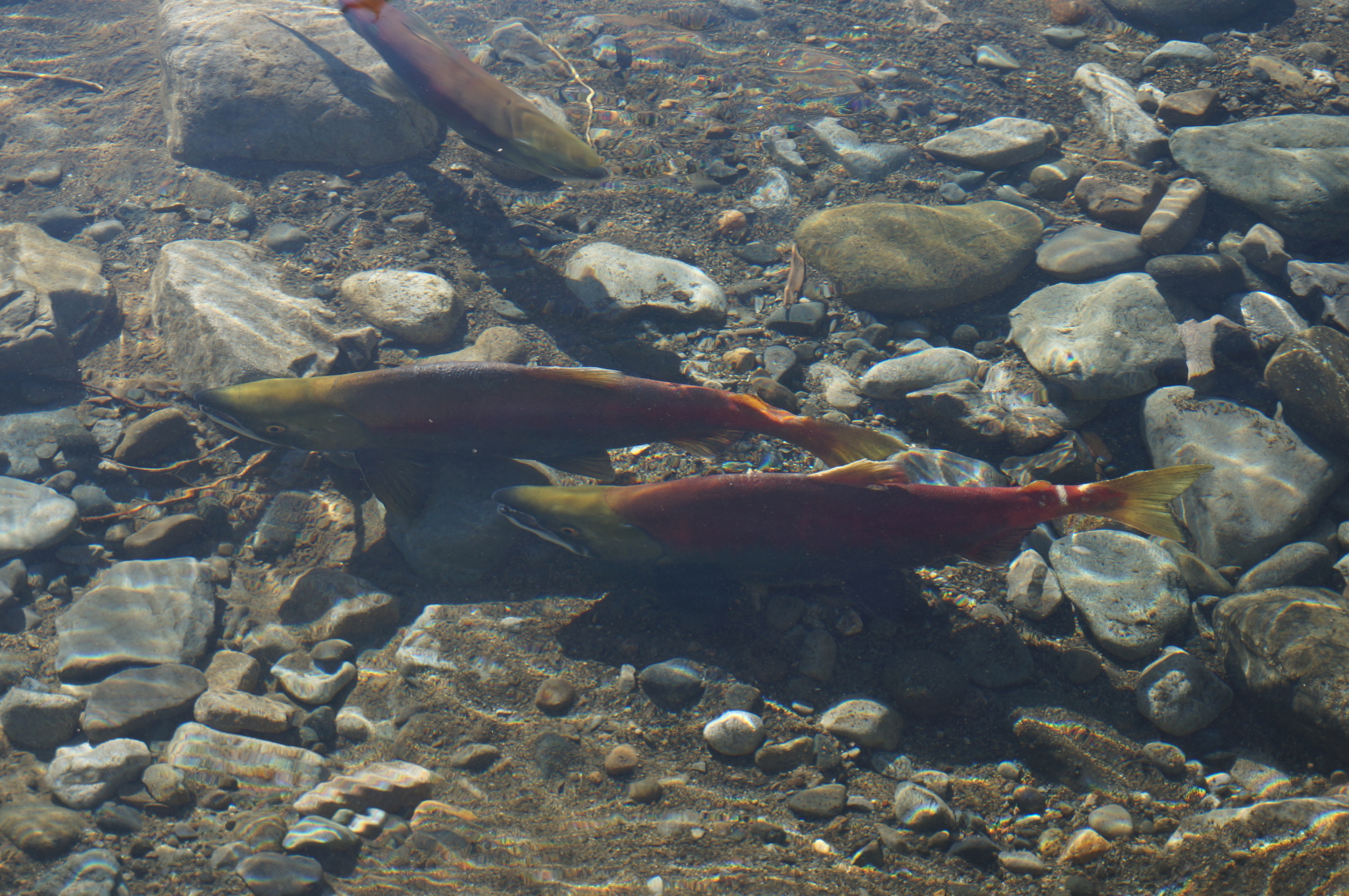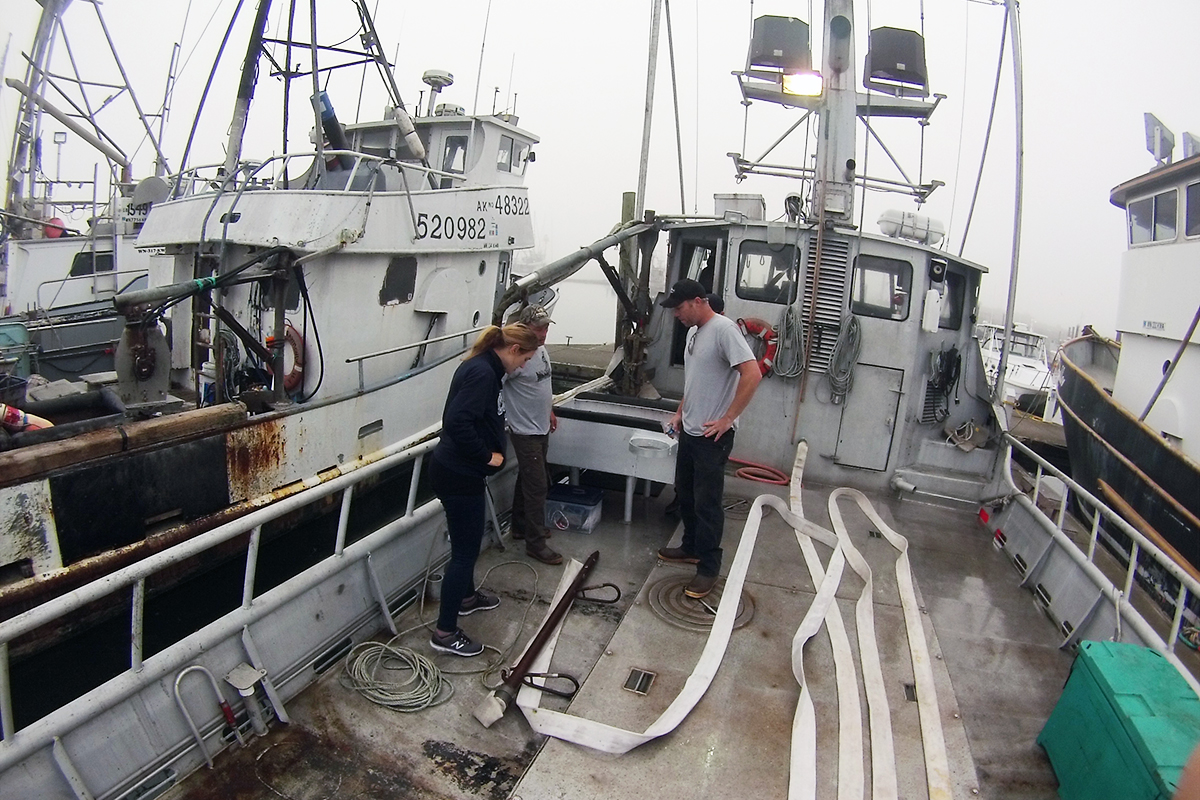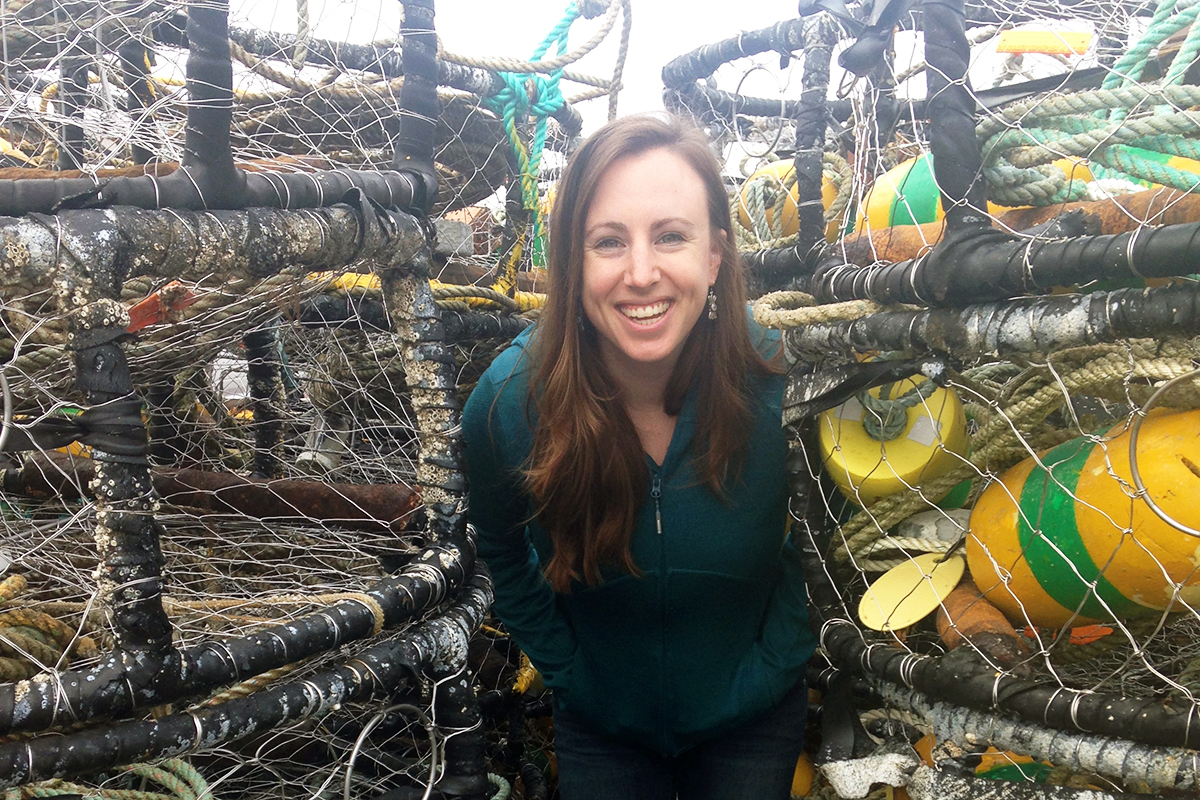Is there a better way that fishermen can target lingcod, without catching endangered fish?
Let’s Go “Salmoning!”
Witnessing the salmon journey with family
Written and Photographed by Ryan Haugo, Senior Forest Ecologist
After 12+ months working on our massive Central Cascades Projects, first the acquisition from Plum Creek Timber Company and now development of our comprehensive management plan, it’s time to take a breath and enjoy the amazing natural features of this landscape. It’s time to go “salmoning”.
What’s “salmoning” you might ask? Salmoning is the name my family has given to act of trekking out to view spawning salmon at the end of their long journey from the ocean. It’s one way for two Midwestern parents to raise Northwestern kids.
This month Chinook and Sockeye salmon are spawning in the upper reaches of the Yakima Basin, in rivers fed by our Central Cascades Forests. The chinook salmon that we viewed began their roughly 500 mile journal from the Pacific Ocean this past spring, up the Columbia River, up the Yakima River, and finally up to their spawning grounds in the Cle Elum River. The Sockeye are present above the dam on Cle Elum Lake thanks to a re-introduction project led by the Yakama Nation. Prior to the completion of the irrigation storage dams in the 1930’s, it is estimated that at least 200,000 sockeye returned annually to the lakes of the Yakima River Basin.
While current number of Salmon in the Yakima River Basin may be a far cry from historic levels, their presence was enough to elicit excitement and amazement in my family and help us remember why we are working to protect, connect, and restore our Washington forests.
More information:
http://yakamafish-nsn.gov/restore/projects/sockeye
http://www.nmfs.noaa.gov/pr/species/fish/chinook-salmon.html
Washington’s Wild Future
Guest blog by Washington Fish and Wildlife Director Jim Unsworth
Written by Jim Unsworth, Director, Washington Department of Fish and Wildlife
Photograph by Bridget Besaw
Nature is why many of us choose to live here in the Pacific Northwest.
Whether you are an angler, a hunter, a hiker, a photographer, a camper, or just take solace in our native species and habitat, we all deeply value our lands, waters, fish and wildlife.
As Director of the Washington Department of Fish and Wildlife, I have a humbling responsibility. The mission of our agency is to preserve, protect and perpetuate fish, wildlife and ecosystems while providing sustainable fish and wildlife recreational and commercial opportunities.
Today as we face challenges ranging from a warming planet and wildfires to screen addiction and couch potato syndrome, this mission is more critical than ever.
That’s why we need your help.
Since I joined WDFW in January 2015, I have been asking people, “If you could tell the director of Fish and Wildlife one thing, what would you say?” Well now is the time for people all across the state to do just that. I want to hear about what we are doing right, where we need to improve, and where we should concentrate our efforts and our funding over the next five to 10 to 20 years.
This is the focus of our new multi-year initiative, Washington’s Wild Future: A Partnership for Fish and Wildlife.
We are embarking on this effort to strengthen the department’s relationships with communities, increase support for conservation and outdoor recreation, and help ensure WDFW programs and services meet the public’s needs.
The comments and proposals we receive – in public meetings, online, and via social media – will help determine priorities for conserving and managing Washington’s fish and wildlife in the coming years.
PUBLIC MEETINGS
The meetings are scheduled for 6 to 8 p.m. at the following dates and locations:
Sept. 30 – Center Place, 2426 N. Discovery Place, Spokane Valley.
Oct. 6 – WDFW Mill Creek Office, 16018 Mill Creek Blvd, Mill Creek.
Oct. 8 – Saint Martin’s University, Norman Worthington Conference Center, 5300 Pacific Ave. SE, Lacey.
Oct. 14 – Water Resources Education Center, 4600 SE Columbia Way, Vancouver.
Oct. 20 – Port of Chelan County Confluence Technology Center, 285 Technology Center Way, Wenatchee.
We will summarize the comments and suggestions from the public, as well as input from outdoor organizations and the department’s advisory groups, later this year (2015). That information will be used to help identify potential changes in WDFW’s operations and services, and to develop future policy, budget and fee proposals. We face major management challenges over the next several years, and for us to be successful we need the public’s support and assistance.
That’s what this initiative is all about – listening and working with you to build a stronger and more effective Fish and Wildlife.
Searching for Crab Pots
Abandoned fishing gear never stops fishing.
Written and Photographed by Molly Bogeberg, Hershman Marine Policy Fellow and Kara Cardinal, Marine Projects Manager
Kara Cardinal and I woke up early to walk the docks in Westport and catch Quinault Indian Nation fisherman (Tony) and Natural Resource Consultants (NRC) staff (Jeff Cox) before they left Westport in search of lost and abandoned crab pots to pluck from the seafloor. The Nature Conservancy has partnered with the Quinault, NRC, and NOAA to use a specially designed line cutter and hydraulic pump to remove crab pots that have been buried deep in the sand or caught in-between rocks.
Jeff demonstrated how the specially designed crab pot line cutters work. It was amazing to see how the white tubing pumps water into the sandy seafloor to help remove buried crab pots. These derelict crab pots are a menace because they can continue to catch crab, impede other fishing practices, and entangle marine mammals. The hope is that by removing these lost pots, the waters close to Westport and the Quinault Nation will be safer for boaters and marine organisms alike.
Learn more about our marine work here.
Fishing Gear Gets a Valuable Update
New fishing pot targets lingcod, leaves other fish behind
Written by Jodie Toft, Senior Marine Ecologist
Photographs by (1) Tim Calver ; (2) Eva Funderburgh / Flickr Creative Commons
This post is about fishing. Really.
First, though, imagine you have a blueberry farm (this is Washington, after all). Now imagine that you can only harvest a few of the blueberries that are ripe for the picking.
Why? Because you only have a big, heavy rake for harvesting - it breaks the branches, strips off the unripe berries, squishes the ripe berries and knocks loose beehives hidden in the bushes. Wouldn’t it be nice if you could get those blueberries some other way?
Off the west coast of the United States, our fishermen are faced with a similar challenge, metaphorically. Millions of pounds of fish that have been given the green light for harvest by scientists and managers are left in the water.
The issue is complex - there are fish to catch and fish to avoid; places and habitats on the seafloor that recover quickly from certain types of fishing and those that do not; large swaths of the ocean that are closed to fishing with certain types of gear; and coastal communities and economies that are increasingly compromised by the revenue that isn’t being generated from fishing.
But complexities aside, a glance in the fishermen’s gearshed offers up what The Nature Conservancy and fishermen see as one of the simple solutions. It’s what’s not in the gearshed that stands out. What’s not there is gear that can be used in rocky habitats to catch the fish we want without catching those we don’t want.
In a collaborative approach to marine conservation, the Conservancy began working with fishermen in Washington and Oregon in 2014 to fill this empty nook in the gearshed. We see the solution in the form of a new type of fishing pot used to catch a high-value fish – lingcod – that occurs in the same rocky habitats as yelloweye and canary rockfish, whose low quotas currently constrain the fishery.
While we apply for permits to test the fish pots in rocky areas currently off limits, we are testing the gear in nearby areas replete with another high-value species – sablefish. And so far sablefish love the new pots, preferring them well over twice as much as the original pots!
And those fish that we didn’t want to catch? Of the ~2,000 fish we caught, there were only 2 canary rockfish and no yelloweye rockfish. Stay tuned as we move closer to lingcod-laden waters and see how much the new pot can be part of the solution.
In the meantime, enjoy the blueberries!
































